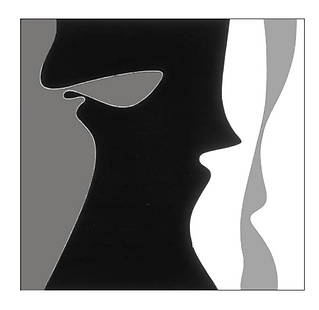
Tension Line to Shape
Part I: Tension Lines
Within a nine-inch square, begin at the left and design nine-inch lines of varying activity ranging from 1 (nearly static) to 4 (extremely active). The lines must flow without points or breaks, running from top to bottom; lines must enter and exit vertically. Number 1 line is almost static, number 4 is the most active with increments of increased activity between the two extremes for the 2 and 3 lines.
The most active line usually involves closure and implied shapes. However, the line should not overlap at any point.
Draw the lines by hand and construct them with short pencil strokes and a sharp pencil. Erase parts of the lines and explore alternative solutions.
Step 1:
Do five thumbnails, approximately 3" x 3" for experimentation before you do your nine-inch square on a separate piece of drawing paper.
Step 2:
Draw your 9" x 9" square (1 inch border on the sides, 2.5 inch on top and bottom) and outline it with the 0.1 Micron pen.
Part 2: Line Composition
Continue your exploration of static to active line arrangements by creating four 9" x 9" drawings. You can experiment by turning the compositions upside down, removing, modifying or adding additional lines. You can use a line more than once, and draw entirely new lines if that makes the composition better. Use a minimum of four lines, more will probably make your composition more interesting.
The spaces between the lines become shapes, and the lines become edges or contours. Be aware and sensitive to these new shapes and which ones are visually interesting and those that are not.
Using a fine line marker and broad maker, explore several black and "white" possibilities (the white is the drawing paper). You can combine black/white shapes and black/white lines. Make sure the lines are fine and sensitively rendered. Also, pay attention to the tension between lines and shapes, and the ambiguity of spatial readings.
Part 3: Shape Composition
Select two of the four compositions—preferably ones that are very different in feel—and transfer them onto watercolor paper USING THE LIGHT BOXES. NOTE the watercolor paper is one inch longer but will not be a problem if you transfer using the lightboxes. For one composition use only black gouache. For the other one use at least two shades of gray as well. Consider how you can depict space in this one.




